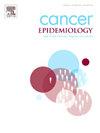A competing-risk nomogram for predicting gastric cancer-specific survival in patients over 70 years: A SEER-based study
IF 2.4
3区 医学
Q3 ONCOLOGY
引用次数: 0
Abstract
Background
Cancer-specific survival in older patients with gastric cancer is competitively affected by death from other causes. This study aimed to investigate cancer-specific survival and associated risk factors by competing-risk analysis in older patients with gastric cancer.
Methods
The data of this study are from the SEER database, using univariable and multivariable analysis of competitive risk model to weaken the impact of competitive events, explore the risk factors of cancer-specific survival, and developed a nomogram model. Then, the performance of the model is verified by C-index, ROC curve, calibration curve and DCA, and the new model is compared with the traditional TNM stage by NRI and IDI.
Results
Our study encompassed a total of 8183 patients, with 5731 in the training cohort and 2452 in the validation cohort. Univariable and multivariable analysis showed that age, years of diagnosis, race, site, SEER stage, TNM stage, surgery, radiation or chemotherapy, LNE, tumor grade and size are independent risk factors for cancer-specific survival in older patients with gastric cancer. Based on the risk factors, we developed a diagram model to predict cancer-specific survival. C-index, ROC curve, calibration curve and DCA also show good results. We compared the new model with the traditional TNM stage model, and the NRI and IDI showed the new model has been significantly improved.
Conclusion
This study developed a nomogram to predict the cancer-specific survival of older patients with gastric cancer, which can accurately predict the prognosis and contribute to clinical treatment decision-making.
用于预测 70 岁以上患者胃癌特异性生存期的竞争风险提名图:基于 SEER 的研究
背景老年胃癌患者的癌症特异性生存率受到其他原因导致的死亡的竞争性影响。方法本研究的数据来自 SEER 数据库,采用单变量和多变量分析竞争风险模型削弱竞争事件的影响,探索癌症特异性生存的风险因素,并建立了一个提名图模型。然后,通过 C 指数、ROC 曲线、校准曲线和 DCA 验证了该模型的性能,并通过 NRI 和 IDI 将新模型与传统 TNM 分期进行了比较。单变量和多变量分析表明,年龄、诊断年限、种族、部位、SEER分期、TNM分期、手术、放疗或化疗、LNE、肿瘤分级和大小是老年胃癌患者癌症特异性生存的独立危险因素。根据这些风险因素,我们建立了一个预测癌症特异性生存率的图表模型。C指数、ROC曲线、校准曲线和DCA也显示出良好的效果。我们将新模型与传统的 TNM 分期模型进行了比较,结果表明新模型的 NRI 和 IDI 有了明显改善。
本文章由计算机程序翻译,如有差异,请以英文原文为准。
求助全文
约1分钟内获得全文
求助全文
来源期刊

Cancer Epidemiology
医学-肿瘤学
CiteScore
4.50
自引率
3.80%
发文量
200
审稿时长
39 days
期刊介绍:
Cancer Epidemiology is dedicated to increasing understanding about cancer causes, prevention and control. The scope of the journal embraces all aspects of cancer epidemiology including:
• Descriptive epidemiology
• Studies of risk factors for disease initiation, development and prognosis
• Screening and early detection
• Prevention and control
• Methodological issues
The journal publishes original research articles (full length and short reports), systematic reviews and meta-analyses, editorials, commentaries and letters to the editor commenting on previously published research.
 求助内容:
求助内容: 应助结果提醒方式:
应助结果提醒方式:


